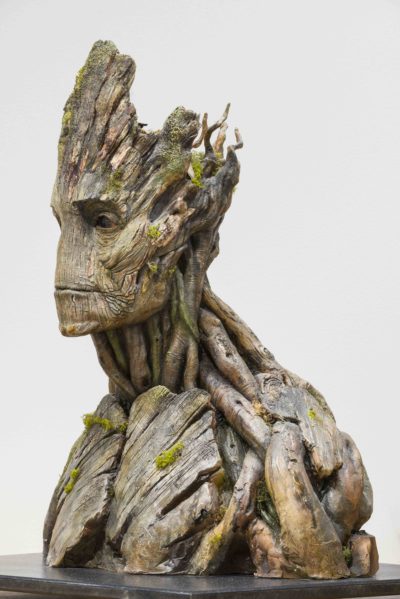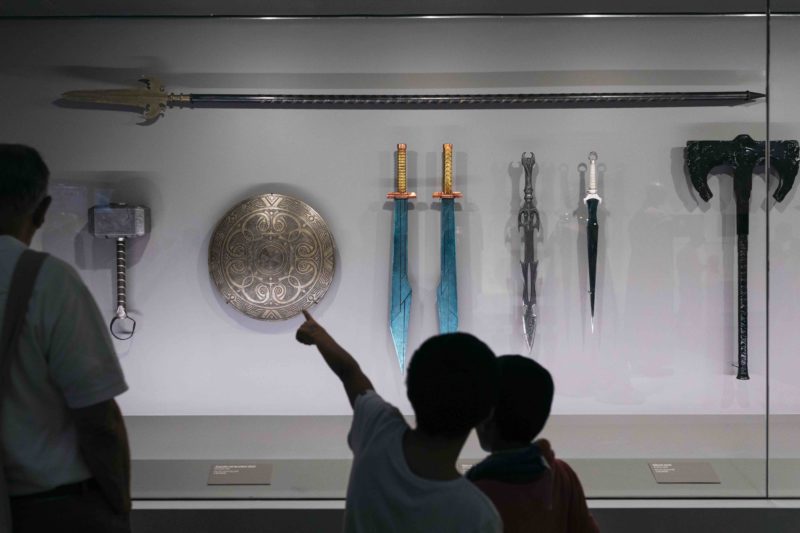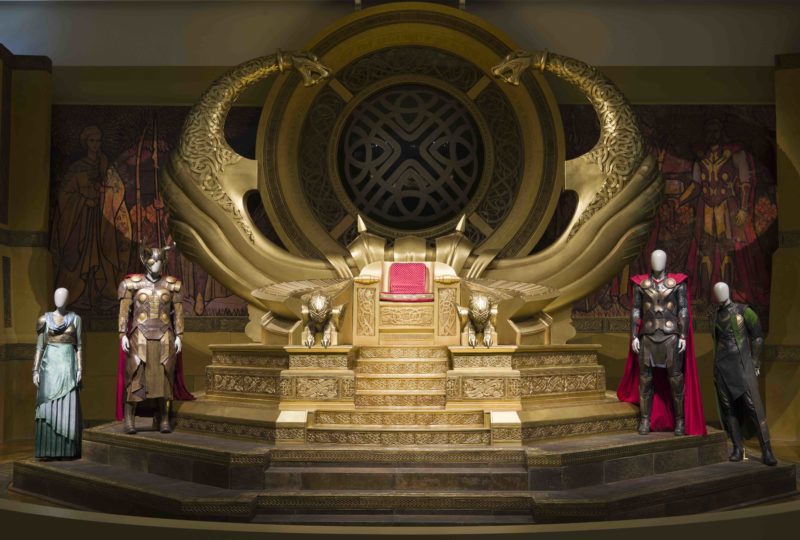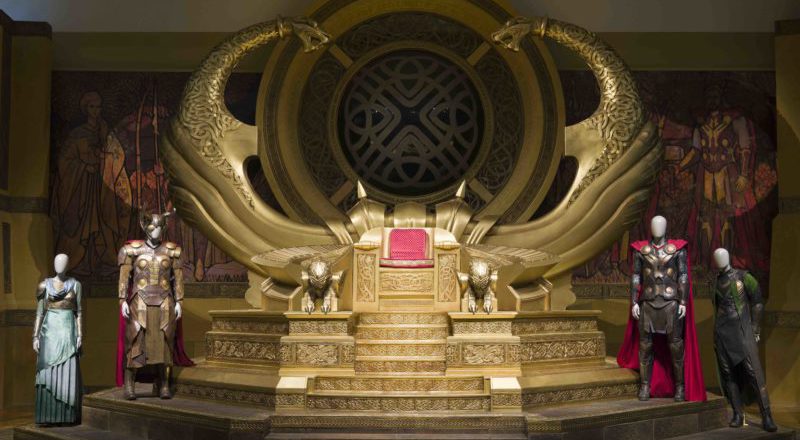INTERVIEW: Learn how Marvel created the ‘Cinematic Universe’ at QAGOMA in Brisbane, Australia

When one looks at the top money-making movies every year, Marvel is almost always represented near the top of the list. The comic book company has a wide variety of superheroes and supervillains to pull from for its movie ventures. From the Guardians of the Galaxy to The Avengers to Spider-Man, the characters are memorable and make for some entertaining CGI-fests.
To celebrate Marvel’s cinematic offerings, the Queensland Art Gallery | Gallery of Modern Art (QAGOMA) in Brisbane, Australia, is currently hosting Marvel: Creating the Cinematic Universe, an exhaustive look into the company’s archives, production designs, props, movie sets, storyboards and visual effects. Attendees can expect to enter the world of Iron Man, Thor, Captain America, Hulk, Black Widow and Hawkeye, among others.
Marvel: Creating the Cinematic Universe is the first major Marvel exhibition in Australia and the largest ever presented in an art museum worldwide, according to a press release.
Recently Hollywood Soapbox exchanged emails with curator Amanda Slack-Smith about Creating the Cinematic Universe In the following interview she details the exhibition’s highlights, gives a behind-the-scenes tour of Marvel’s impact and considers whether comic-book art deserves more respect from museums. Questions and answers have been slightly edited for style.
The exhibition has the themes ‘Cinematic Assembled’, ‘Decoding the Universe’ and ‘Behind the Scenes’. Did these themes come early in the planning stages? Did they help focus the show?
These themes were identified early in the planning stage as I was keen for the exhibition to look at the films as a holistic, fictional world, as well as highlighting the work of artists and creative teams behind the much-loved stories both in comic books and films.
The ‘Cinematic Assembled’ dissolves the demarcations between individual films to look at the larger narrative arcs at play within the cinematic universe; ‘Decoding the Universe’ brings these film[s] back together and explores … how the characters are connected within the one universe; and ‘Behind the Scenes’ celebrates the pre-production and post-production process, bringing together the work of creative people and departments that make these film[s] possible.
Overall it was important to celebrate the art of storytelling, which Marvel has been perfecting since 1939, by looking at all the elements that create the seamless experience you see in the cinema.

For Marvel fans, what do you believe the exhibition offers?
Marvel fans have the opportunity to see the set worn props and costumes they’ve loved on screen in person. The exhibition brings together these elements from Iron Man 2008 to Doctor Strange 2016 alongside pieces from the set of Thor: Ragnarok, still to be released. Highlights from Thor: Ragnarok include the incredible Asgardian throne room, Hulk’s gladiatorial bed and a model of the capital city of Sakaar where the film is set.
There is also a display of rare early comics which depict the first appearance of Marvel Cinematic Universe characters, as well as a selection of contemporary comics which have influenced the film narratives. Of particular note for fans is the first page of Amazing Fantasy #15, an original artwork page drawn by Steve Ditko, loaned to us from Prints and Photographs Division, The Library of Congress, Washington, D.C., which depicts the first appearance of Marvel’s beloved Spider-Man. It’s a national treasure and an incredibly rare opportunity to see original artwork for a Marvel master.
For non-Marvel fans, and perhaps people who have never picked up a comic book or seen one of the movies, what do you believe the exhibition offers?
The costumes and props are beautifully fashioned and can be appreciated for their craftsmanship alone. That said there is something magical about standing in the Asgardian throne room, the closest most people will come to being on a film set, or seeing behind the curtain to the many different elements needed to make a film. There is also a large array of interactive experiences throughout that invite the audience to have fun and explore.
Was it obvious which characters to focus on in the show? Did you consider others but couldn’t find enough props, costumes, original art?
A strong focus is given to the beloved characters of Captain America, Thor, Iron Man and Hulk — as well as the Avengers team — alongside Ant-Man, Doctor Strange and the Guardians of the Galaxy. Within these areas you’ll find nods to other characters — Nick Fury, Flacon, Red Skull, Winter Soldier and many more — as they are an important part to telling these stories. With over 500 artworks, props, costumes, comics, clips and interactive experiences, I feel we were able to tell the stories we wanted to in a rich way. With the interrelated world of Marvel, all props and costumes have lives after filming, so we were really lucky to have been given such amazing access to the Marvel archive.

Do you feel there is a stigma among art enthusiasts against commercial art like comic books and superhero movies?
The role of museums and galleries is to interpret and interrogate the way we understand the world around us. A way to do this is opening up dialogue with our audiences around popular culture and its place in the broader social context, and many museums and galleries have been doing this for a number of years now. Comic books and superhero film[s] are part of our cultural landscape alongside all aspects of contemporary visual culture, including film, fashion, music, performance and online realms, so it’s important to talk about these.
Queensland Art Gallery | Gallery of Modern Art (QAGOMA), for example, is an art museum that’s uniquely suited to film-related projects. The exploration of film as an art medium is in the DNA of our building with a dedicated Cinémathèque and media art gallery located alongside more traditional white gallery spaces. By examining popular culture in an art museum we are able to look at the convergence between cinema and contemporary art and society.
The filming of Thor: Ragnarok on the Gold Coast, so close to QAGOMA in Brisbane, offered us a great opportunity to investigate [how] Marvel is changing the cinematic landscape through their singular interwoven universe — currently across 16 films, 17 with the release of Thor: Ragnarok — and we were keen to look at this in both a physical way as well as presenting the films in our cinemas. The response from our audiences has been extremely positive, fans and non-fans alike.
Are you a fan of Marvel? Do you have a favorite character?
Yes, I’ve been a Marvel fan for quite some time. My favourite character at the moment would be Black Widow. I particularly enjoyed the 2014 Black Widow comic series by Nathan Edmonson and Phil Noto, which I felt teased out the complexities of her character nicely, and I’ve also found the character compelling in the films.
What has been the most surprising discovery in your research into the archives?
The true superpower in filmmaking is the ability of the director, producers, production designer and many other talented people to ensure all of the artistic elements work in harmony. The level of craftsmanship and care that has gone into every aspect of [filmmaking] is fascinating, and the result is a celebration of creativity and passion which I find inspiring.
By John Soltes / Publisher / John@HollywoodSoapbox.com
Marvel: Creating the Cinematic Universe continues through Sept. 3 at the Queensland Art Gallery | Gallery of Modern Art (QAGOMA). Click here for more information and tickets.

